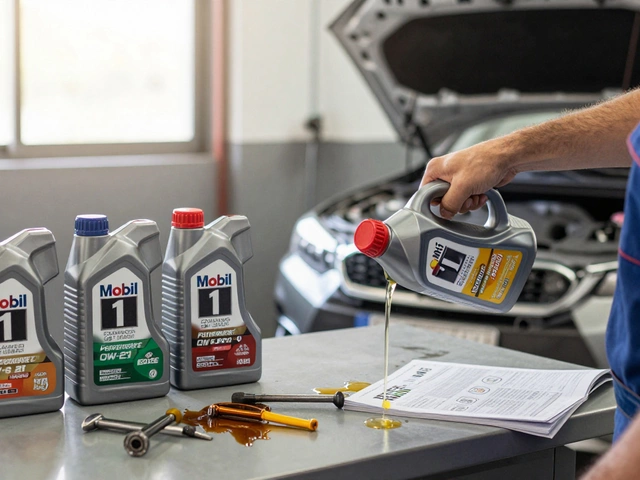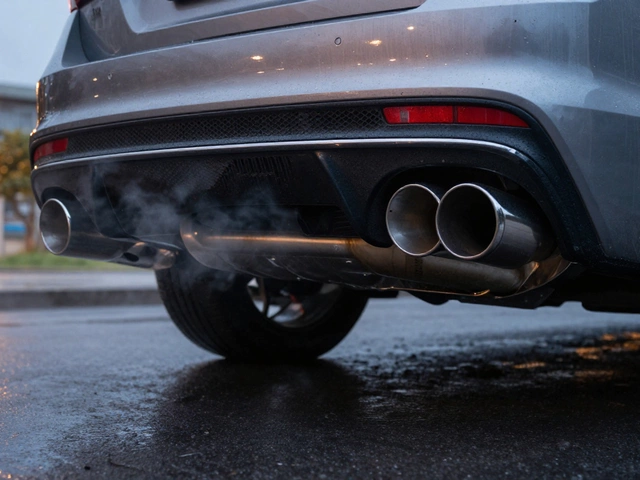Exhaust Systems: What They Do and How to Choose the Right One
When you hear a growl from a car, the exhaust is usually the star of the show. It’s not just about noise – the exhaust moves gases out of the engine, helps the engine breathe, and can add a few extra horses if you pick the right kit. In this guide you’ll learn the basics, see where performance gains hide, and figure out how to stay on the right side of the law.
Performance Benefits
Most stock exhausts are built to meet noise rules, not to squeeze out power. A cat‑back or axle‑back system replaces the muffler and tailpipe with larger‑diameter pipes and a freer‑flowing muffler. The bigger pipes lower back‑pressure, letting the engine push out exhaust faster. That translates into a small boost in horsepower and torque, especially at higher RPMs.
Another trick is the header. A good header splits the exhaust pulses from each cylinder before they join together. When the pulses stay separate longer, the engine gets a clearer “breathing” path and makes a bit more power. The gain isn’t huge – usually 5‑10 hp – but drivers who love a responsive feel notice the difference.
If you’re after sound as well as power, look for an active valve exhaust. It uses a valve that opens at higher RPMs, giving a louder note when you rev hard, but stays quiet at city speeds. That way you get that throaty feel on the track without annoying the neighbors on the way home.
Legal & Sound Considerations
Every state (and most countries) sets a decibel limit for street cars. In many places you can’t exceed 80‑85 dB measured from a specific distance. Before you buy a loud system, check the local limit. Many manufacturers list the dB level for each model, so you can match a kit that stays legal.
Noise isn’t the only legal hurdle. If your car has a catalytic converter, you can’t remove it, and you can’t replace it with a straight‑through “cat‑less” pipe. A cat‑back system leaves the factory cat in place, so you stay compliant with emissions rules.
Testing your own exhaust is easy. Grab a dB meter app on your phone, rev the engine to 3,000‑4,000 RPM on a flat road, and note the reading. If you’re over the limit, consider a muffler with more restriction or a resonator to tame the sound.
Maintenance is simple, too. A stainless‑steel system resists rust, but check the clamps every few months and tighten any that loosen. A cracked pipe can let hot gases escape and damage nearby parts, so replace it before it gets worse.
When you shop, compare a few brands. Look for a warranty (most give at least one year), a reputable installer, and reviews that talk about real‑world dB levels and power gains. If you’re not comfortable installing it yourself, a local shop can bolt it on in an hour or two.
Bottom line: a good exhaust can make your car sound better, feel a little quicker, and still pass inspection. Pick a cat‑back or active‑valve kit that matches your performance goals, check the dB rating for your area, and keep the system tight and clean. With those steps you’ll enjoy a richer exhaust note without getting a ticket.

Will a 3 Inch Exhaust Improve Your Car's Performance?
Trying to decide on a 3 inch exhaust? Learn how it impacts horsepower, sound, and drivability, plus tips for choosing the right size for your car.
CONTINUE READING
Exhaust Tips and Sound: Does Swapping the Tip Actually Change Anything?
Ever wondered if changing your car’s exhaust tip actually affects how your ride sounds? This article breaks down what exhaust tips do, separates fact from fiction, and helps you understand how they relate to real-world sound changes. We’ll get into what makes an exhaust sound louder or deeper, and if you can actually get those results with a simple tip swap. Expect tips to choose the right look and learn what’s worth your money. Perfect for anyone weighing a cheap mod versus a real upgrade.
CONTINUE READING
What to Look for When Buying an Exhaust: Simple Tips for Better Performance
Buying an exhaust system can be confusing, especially with so many options out there. Knowing what features to look for can make it easier. This article covers essential tips for selecting the right exhaust, explaining what affects sound and performance. It also shares some interesting facts and practical advice to make your buying decision smarter.
CONTINUE READING










